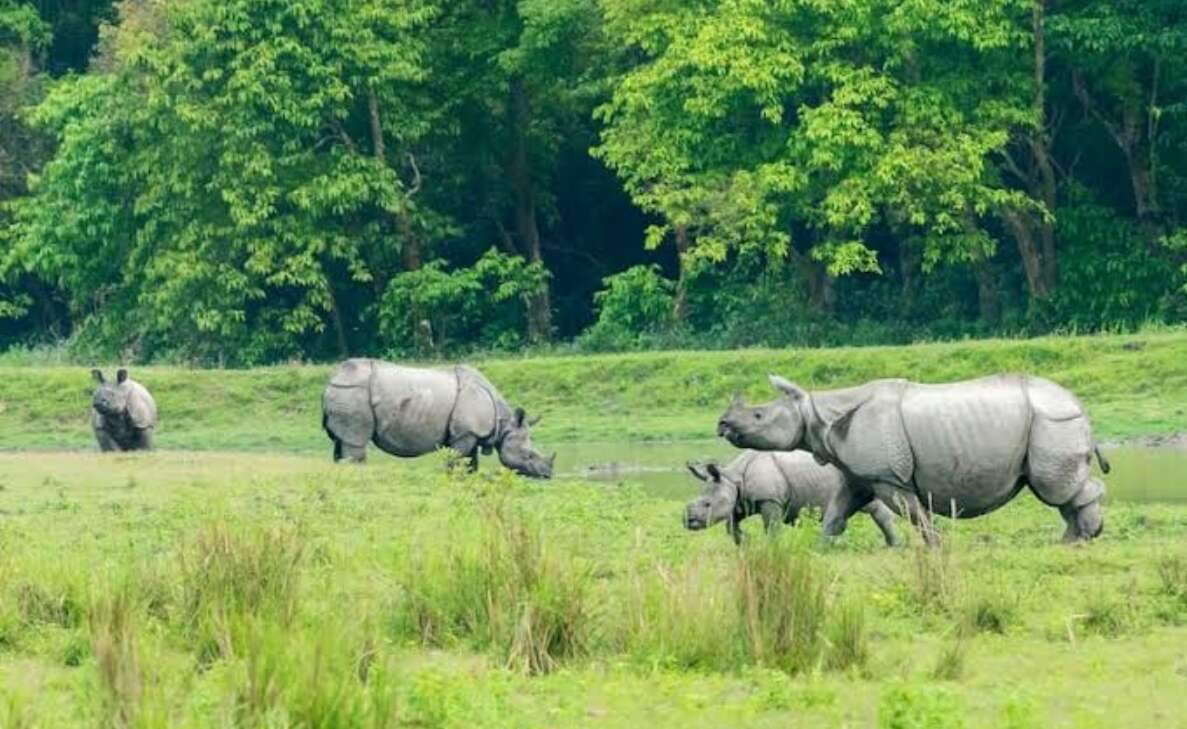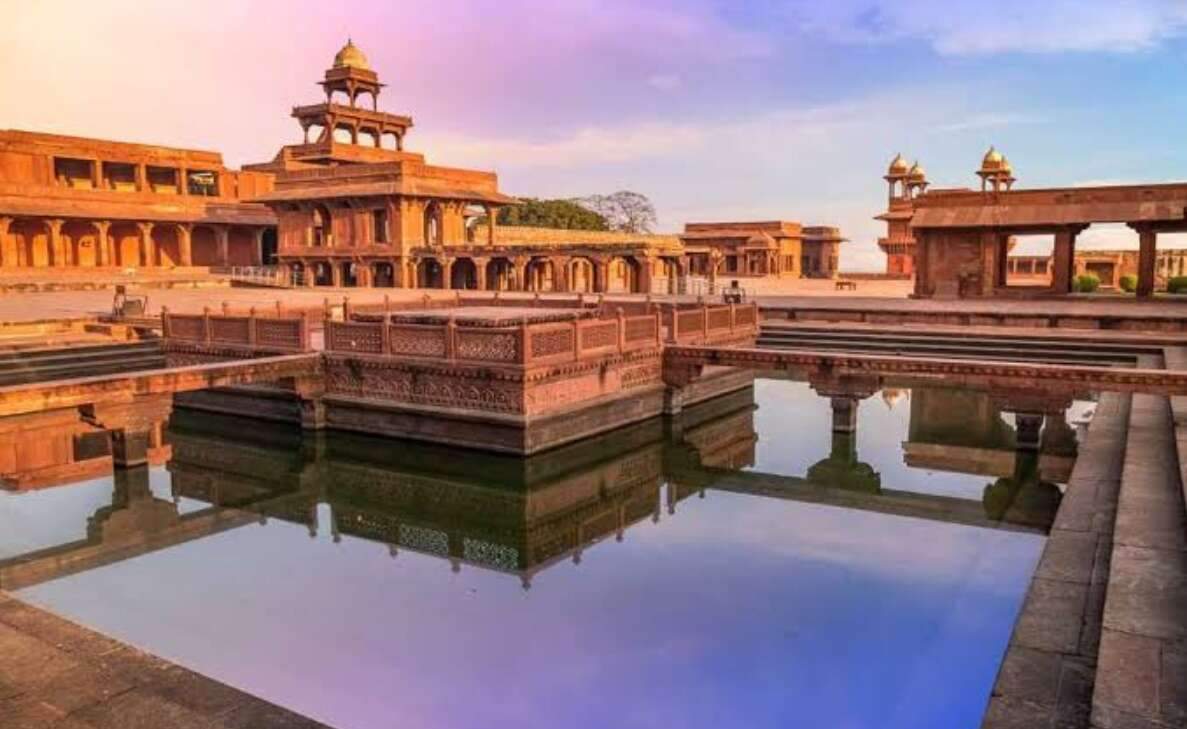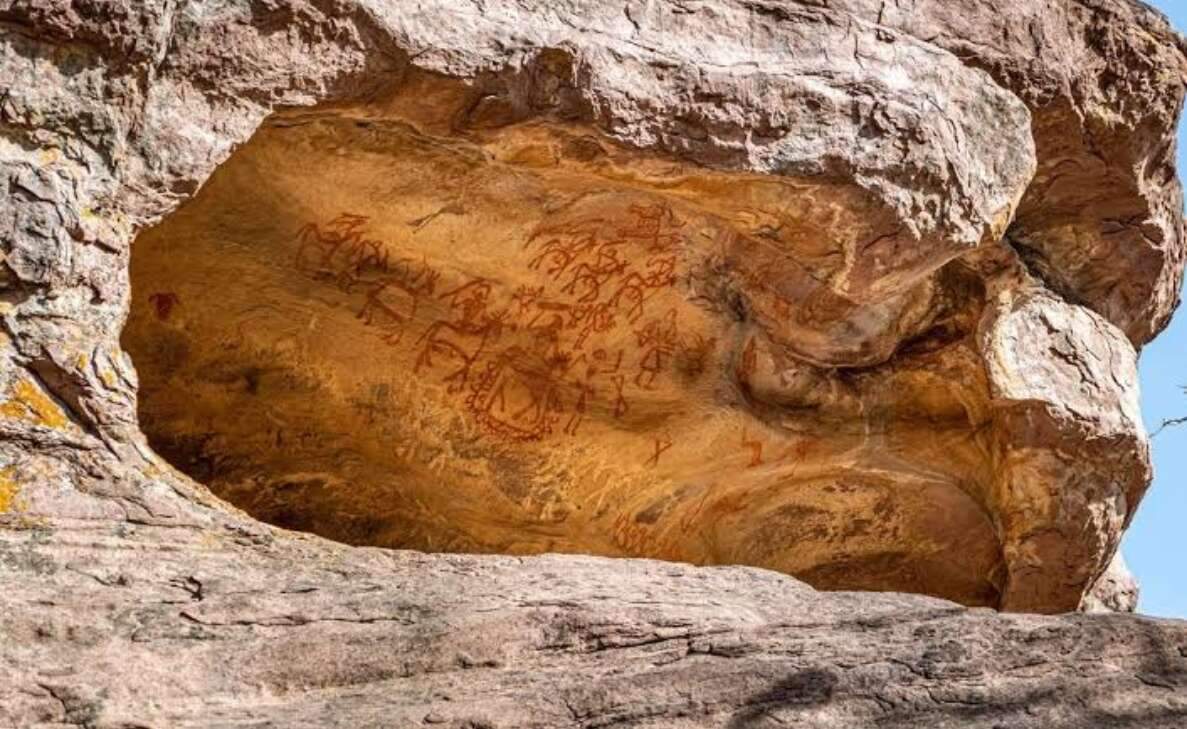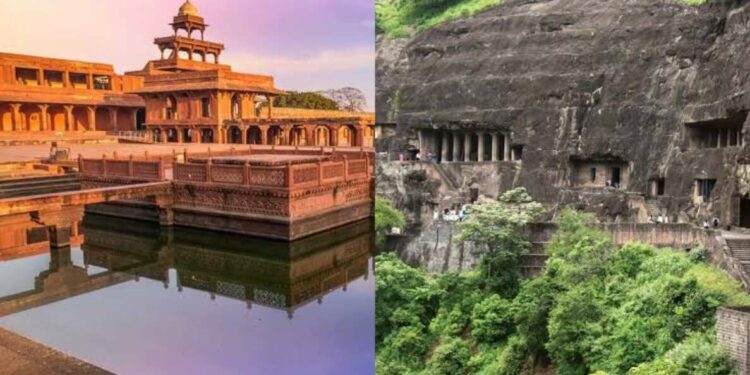North India, a region steeped in history and culture, is home to a rich tapestry of UNESCO World Heritage Sites. These extraordinary sites bear witness to the region’s diverse heritage, spanning centuries of architectural brilliance, spiritual significance, and artistic mastery. From the iconic Taj Mahal, a symbol of eternal love, to the ancient temples of Khajuraho adorned with exquisite sculptures, and the vibrant Jaipur City, each UNESCO-listed heritage site in North India offers a unique glimpse into the country’s past and present.
Kaziranga National Park
 The greatest number of Indian rhinoceroses in the world is in Kaziranga Park’s woodland area. Hoolock Gibbon, Tiger, Leopard, Indian Elephant, Sloth Bear, Wild Water Buffalo, Swamp Deer, and others can also be observed in Kaziranga’s elephant grass, marshlands, and deep tropical moist broadleaf forests. Government officials designated Kaziranga as a Tiger Reserve in the year 2006 due to an annual growth in the tiger population. Additionally, a considerable variety of migratory bird species from Central Asia can be found here.
The greatest number of Indian rhinoceroses in the world is in Kaziranga Park’s woodland area. Hoolock Gibbon, Tiger, Leopard, Indian Elephant, Sloth Bear, Wild Water Buffalo, Swamp Deer, and others can also be observed in Kaziranga’s elephant grass, marshlands, and deep tropical moist broadleaf forests. Government officials designated Kaziranga as a Tiger Reserve in the year 2006 due to an annual growth in the tiger population. Additionally, a considerable variety of migratory bird species from Central Asia can be found here.
Fatehpur Sikri Fort
 Other early Mughal buildings, with Muslim and Hindu architectural elements, may be found in Fatehpur Sikri. They consist of Jodha Bai’s palace, a personal audience room, and residences. In 1586, the Mughal capital was transferred from Fatehpur Sikri to Delhi due to the city’s insufficient water supply. Fatehpur Sikri, now preserved as a historical site, was given the UNESCO World Heritage designation in 1986.
Other early Mughal buildings, with Muslim and Hindu architectural elements, may be found in Fatehpur Sikri. They consist of Jodha Bai’s palace, a personal audience room, and residences. In 1586, the Mughal capital was transferred from Fatehpur Sikri to Delhi due to the city’s insufficient water supply. Fatehpur Sikri, now preserved as a historical site, was given the UNESCO World Heritage designation in 1986.
Valley of Flowers National Park
 India’s Uttarakhand state is home to the magnificent Valley of Flowers National Park, a UNESCO World Heritage Site. This pristine alpine valley, which is 87.5 square kilometres in size, is well known for its gorgeous meadows that are covered in a vivid tapestry of numerous wildflowers, especially during the monsoon season. It is a sanctuary for many wildlife and boasts rare and endangered floral species, like the blue poppy. Additionally, this beautiful park provides mesmerising views of the nearby Himalayan peaks. It is a haven for hikers and nature lovers and captures the essence of unspoiled natural beauty, making it a must-visit location for anybody looking for peace and the wonders of the natural world.
India’s Uttarakhand state is home to the magnificent Valley of Flowers National Park, a UNESCO World Heritage Site. This pristine alpine valley, which is 87.5 square kilometres in size, is well known for its gorgeous meadows that are covered in a vivid tapestry of numerous wildflowers, especially during the monsoon season. It is a sanctuary for many wildlife and boasts rare and endangered floral species, like the blue poppy. Additionally, this beautiful park provides mesmerising views of the nearby Himalayan peaks. It is a haven for hikers and nature lovers and captures the essence of unspoiled natural beauty, making it a must-visit location for anybody looking for peace and the wonders of the natural world.
Ajanta Caves

The Buddhist Ajanta Caves are renowned for their wall paintings and are a group of rock-cut cave temples and monasteries close to Ajanta Village in north-central Maharashtra State, western India. The temples are located in the Wagurna River valley, 65 miles (105 km) northeast of Aurangabad, and are carved out of granite cliffs on the inner side of a 70-foot (20-metre) chasm. This historical collection of about 30 caverns, which includes chaityas (sanctuaries) and viharas (monasteries), was discovered between the first century BCE and the seventh century CE.
Rock Shelters of Bhimbetka
 On the southernmost edge of the plateau in central India, the Rock Shelters of Bhimbetka are situated in the foothills of the Vindhyan Mountains, a UNESCO World Heritage Site. There are five groups of natural rock shelters with paintings that appear to date from the Mesolithic Period up to the historical period hidden behind large sandstone outcrops above reasonably deep woodland. The residents of the twenty-one nearby villages have cultural practices that are strikingly similar to those shown in the rock art.
On the southernmost edge of the plateau in central India, the Rock Shelters of Bhimbetka are situated in the foothills of the Vindhyan Mountains, a UNESCO World Heritage Site. There are five groups of natural rock shelters with paintings that appear to date from the Mesolithic Period up to the historical period hidden behind large sandstone outcrops above reasonably deep woodland. The residents of the twenty-one nearby villages have cultural practices that are strikingly similar to those shown in the rock art.
Let us know which one of these UNESCO heritage sites in North India you are visiting first. Stay tuned to Yo! Vizag website and Instagram for more travel recommendations.










Discussion about this post